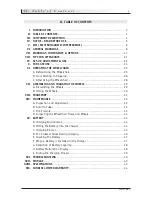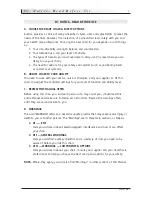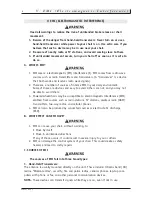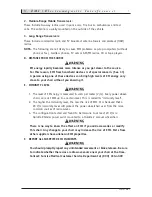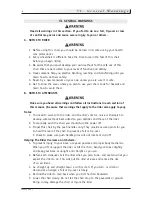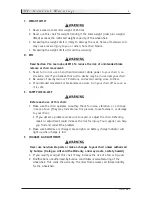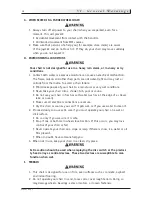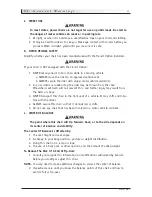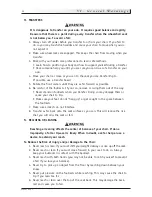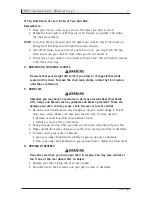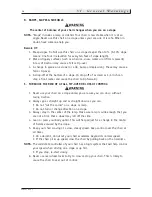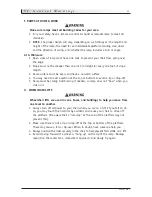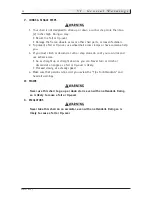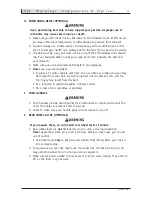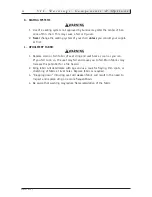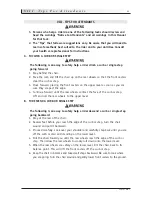
V . E M I ( E l e c t r o m a g n e t i c I n t e r f e r e n c e )
930547 Rev. C
6
V. EMI (ELECTROMAGNETIC INTERFERENCE)
Heed all warnings to reduce the risk of unintended brake release or chair
movement:
1. Beware of the danger from hand-held transceivers. Never turn on or use a
hand-held transceiver while power to your chair is on. Use extra care if you
believe that such a device may be in use near your chair.
2. Be aware of nearby radio or TV stations, and avoid coming close to them.
3. If unintended movement occurs, turn your chair off as soon as it is safe to
do so.
A. WHAT IS EMI?
1. EMI means: electromagnetic (EM) interference (I). EMI comes from radio wave
sources such as radio transmitters and transceivers. (A “transceiver” is a device
that both sends and receives radio wave signals).
2. There are a number of sources of intense EMI in your daily environment.
Some of these are obvious and easy to avoid. Others are not, and you may not
be able to avoid them.
3. Powered wheelchairs may be susceptible to electromagnetic interference (EMI)
emitted from sources such as radio stations, TV stations, amateur radio (HAM)
transmitters, two-way radios, and cellular phones.
4. EMI can also be produced by conducted sources or electro-static discharge
(ESD).
B. WHAT EFFECT CAN EMI HAVE?
1. EMI can cause your chair, without warning, to:
• Move by itself
• Move in unintended directions
If any of these occurs, it could result in severe injury to you or others.
2. EMI can damage the control system of your chair. This could create a safety
hazard, and lead to costly repairs.
C. SOURCES OF EMI
The sources of EMI fall into three broad types:
1. Hand-Held Transceivers:
The antenna is usually mounted directly on the unit. These include: Citizens band (CB)
radios, “Walkie-talkies”, security, fire and police radios, cellular phones, lap-top com-
puters with phone or fax, and other personal communication devices.
NOTE–
These devices can transmit signals while they are on, even if not in use.



